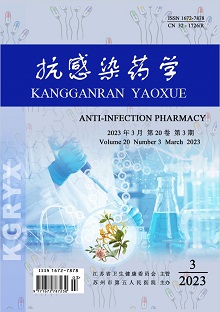LI Gui-feng, ZHOU Mi
Objective: To analyze the relevant characteristics of anti-infective treatment consultation of children with complicated urinary tract infection (cUTI) involved by clinical pharmacists, so as to provide reference for clinical pharmacists to carry out pharmaceutical consultation practices. Methods: A total of 38 children with cUTI who were admitted to Department of Urinary Surgery, Children's Hospital of Soochow University from January 2022 to August 2022 and consulted by clinical pharmacists were selected as the research objects. The children's information were collected, such as age, gender, diagnosis, clinical manifestations, microbiological test results and final outcomes, as well as consultation opinions of clinical pharmacists and their adoption, and the relevant characteristics of anti-infective treatment consultation in children were analyzed. Results: In addition to cUTI, 38 children were complicated with vesicoureteral reflux (21 cases, 55.26%), hydronephrosis (8 cases, 21.05%) and other diseases; the clinical manifestations of 38 children with cUTI were mainly fever (20 cases, 52.63%), elevated white blood cell (WBC) count in urine (38 cases, 100.00%) and positive leukocyte esterase (38 cases, 100.00%), elevated WBC count in blood (23 cases, 60.53%) and elevated C-reactive protein (27 cases, 71.05%). In terms of microbiological test, a total of 42 strains of pathogenic bacteria were detected in 38 children with cUTI, mainly including Pseudomonas aeruginosa (14 cases, 33.33%), Escherichia coli (8 cases, 19.05%) and Klebsiella pneumoniae (7 cases, 16.67%). The drug susceptibility test results showed that the sensitivity rates of three pathogenic bacteria to piperacillin-tazobactam sodium, meropenem, imipenem-cilastatin sodium and amikacin were all high (above 85.00%). For 38 children with cUTI, clinical pharmacists gave a total of 53 consultation opinions, 44 opinions of which were adopted (83.02%), involving 31 children; the outcomes of 30 children (96.77%) were effective, while 5 of the remaining 7 cases (71.43%) had an effective outcome. Among 38 children with cUTI, 10 case had adverse drug reactions during the use of antibacterials, 8 cases of which were related to cefoperazone-sulbactam sodium, with symptoms of diarrhea and rash. Conclusion: The pathogenic bacteria of cUTI in children are mainly Pseudomonas aeruginosa, Escherichia coli and Klebsiella pneumoniae. When clinical pharmacists participate in the anti-infective treatment consultation, they can provide professional pharmaceutical opinions for the medical team to formulate anti-infection therapeutic regimens, to guarantee the safety and effectiveness of medications for children.
